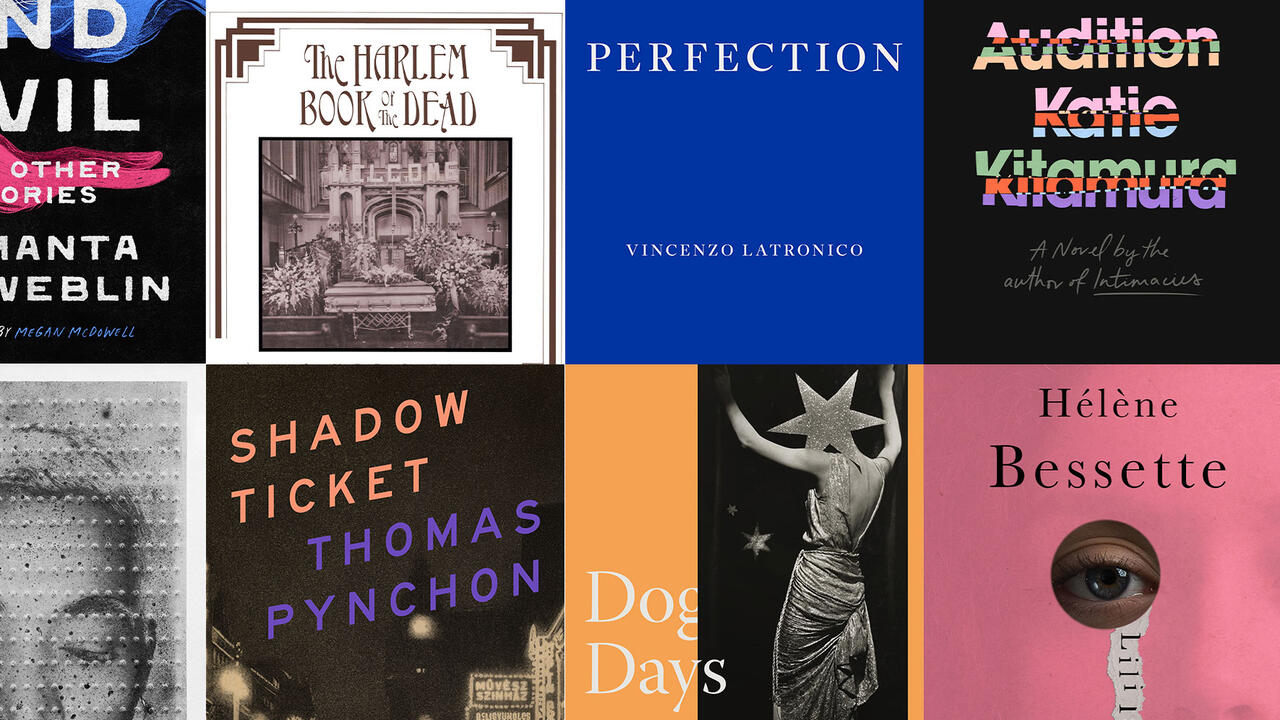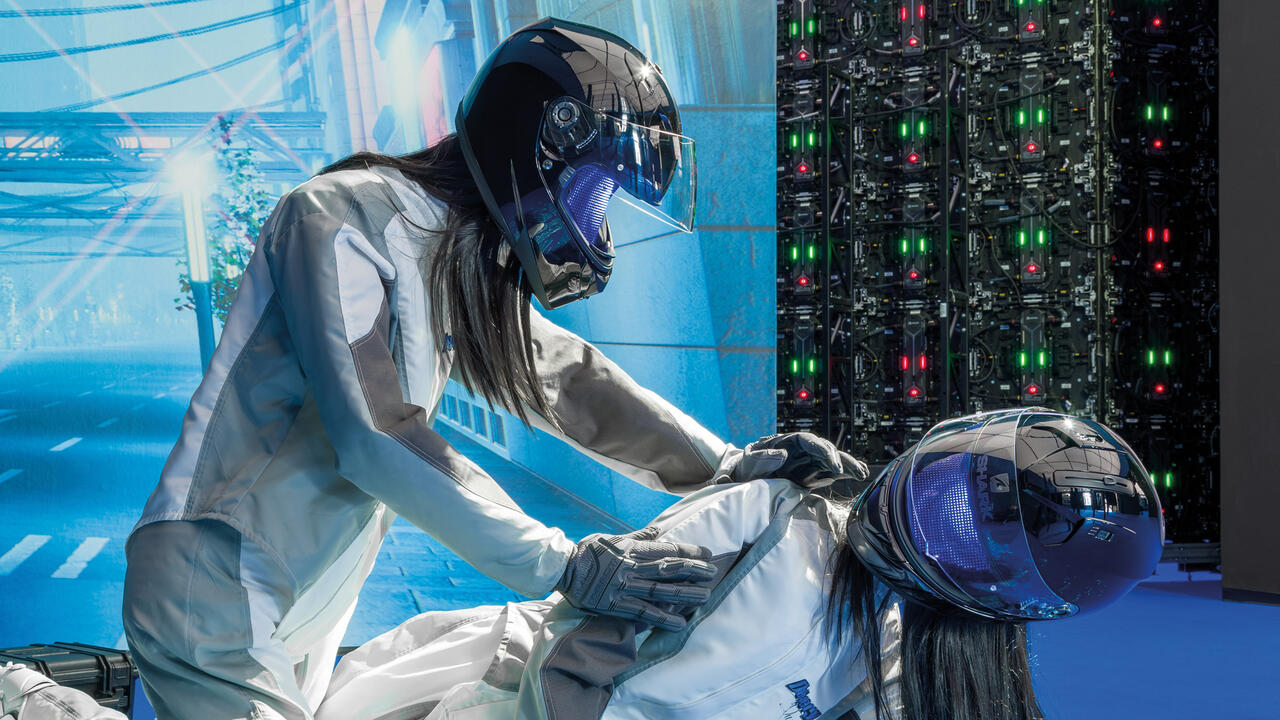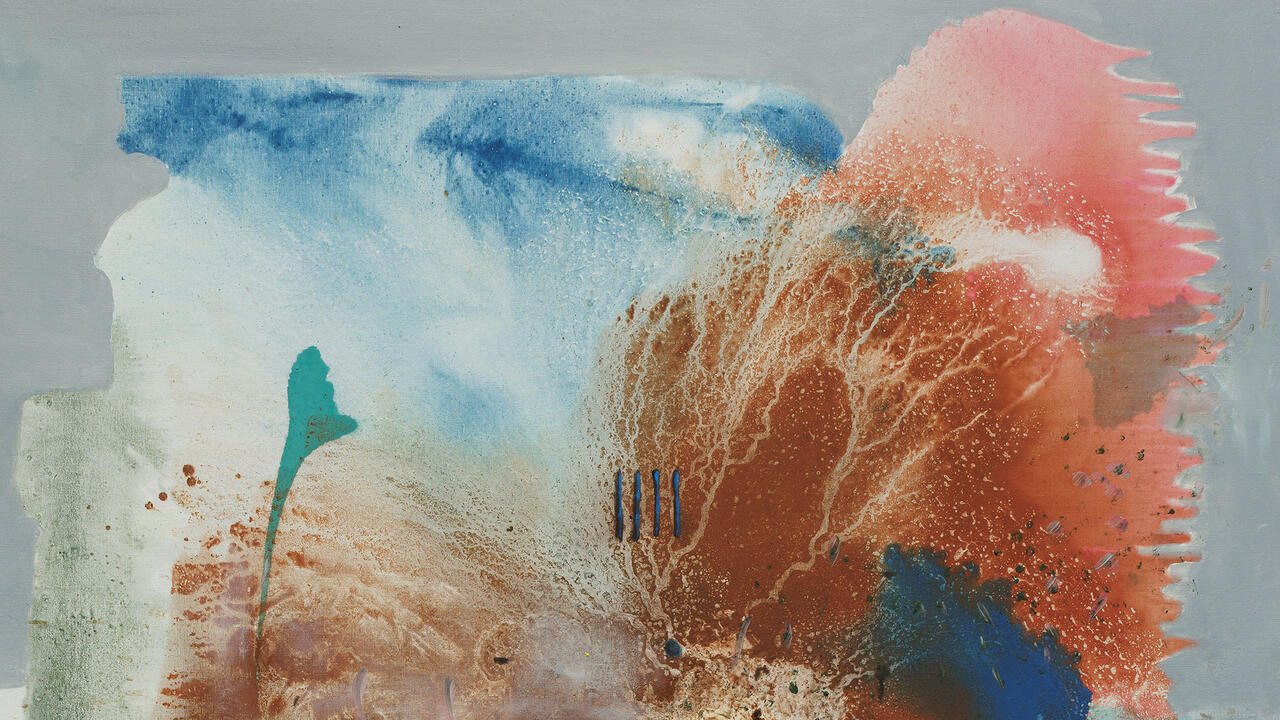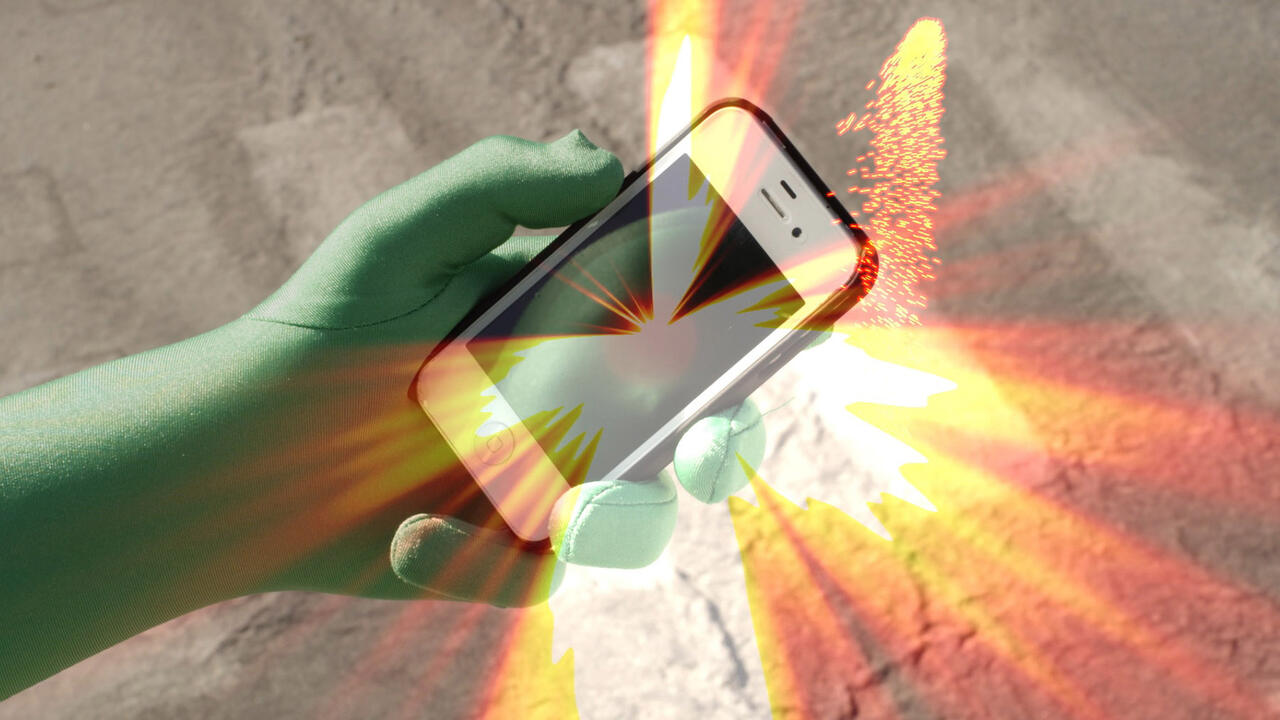Matthew Darbyshire
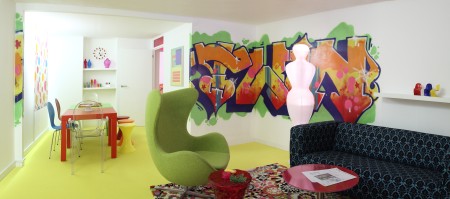
Estate agents’ brochures drop through the letter box, their design indistinguishable from that of lifestyle magazines. Newspaper supplements profile the homes of young stylists, gallerists and environmental activists, as though their choice of soft furnishings might provide hard news about their psyches. MTV Cribs shows us around 50 Cent’s Connecticut ranch house (‘I ain’t gonna tell you no lies, these chairs came from Mike Tyson’). Interior designer Laurence Llewelyn-Bowen launches a collection of tableware on his website with the words: ‘I’ve always had a theory that the way we display specific objects in the dining-room is unwittingly or at least subconsciously inspired by Roman altars to the household gods’.
Curated by Anna Colin, Matthew Darbyshire’s exhibition ‘Blades House’ at Gasworks (the title is taken from the name of a nearby social housing development, parts of which are now privately owned) began with a human figure, or rather its absence. Suspended from the ceiling of a silver-wallpapered antechamber was a man’s suit, its fabric patterned with the logos of various luxury and budget brands, from Ralph Lauren to George at Asda. These empty vestments suggested an invisible man, consumed by consumerism. Who is he? How might we know him? The answer’s simple – step inside his beautiful home.
Beyond the dangling suit lay a door which opened onto a mock-up of the interior of a white-walled, windowless and almost oppressively neat one-bedroom apartment, based on the floor plan of a unit in the exhibition’s titular block, and belonging, in Darbyshire’s words, to ‘a fictitious, urban middle-class professional in his mid-30s’. Padding across the entrance hall’s orange carpets, the visitor was greeted by a Brompton folding bicycle (also orange), framed prints by Patrick Caulfield, Michael Craig-Martin and Henri Matisse, and a hatstand on which was hung a hooded top that seemed snatched from the wardrobe of some Nu-Rave kid from the television youth drama Skins (2007–ongoing). This penchant for mixing bright colours with bold shapes (Darbyshire is quietly masterful in his corralling of tone and form) was repeated in the bedroom, where the click-wheel of a tangerine iPod Nano was echoed in a CND logo painted in a rainbow of muddy, Morris Louis-like washes onto the surface of a bedside lamp. Period details proliferated – a Muji bed, a Paul Smith striped shirt, a Robin Day E-Series chair of recent manufacture – and the room might easily have featured in a magazine piece on the contemporary bachelor pad (‘combine classic Modernism with a witty Pop sensibility and the acid palette of the Third Summer of Love’) or functioned as a museum display depicting a ‘noughties’ interior that, characteristically, hasn’t quite shrugged off the 1990s, or that decade’s preoccupation with retro chic.
Such shuffling of fashions from the recent past was also in play in the living room. Here an outsized graffiti tag provided the backdrop for an anthropomorphic Ikea floor lamp, two prints by Andy Warhol were hung next to one by Takashi Murakami, kitschy statuettes of Jesus and Mary were shelved next to a bust of the Buddha, and – brilliantly – Arne Jacobson ‘Egg’ and ‘Swan’ recliners shared floor space with a pair of contemporary ‘Bistro’ stacking chairs sold by the British supermarket giant Tesco: cheap knock-offs of Jacobsen’s own ‘Series 7’ chair from 1955. (Democratic design? As the Tesco slogan says: ‘Every little helps!’)
And yet, for all the fun that Darbyshire had with these juxtapositions, ‘Blades House’ was also a sharply unsettling place. On a plasma TV screen the artist showed a looped video that spliced together dramatic moments and musical numbers taken from a number of Hollywood movies of the rags-to-riches genre, including Oliver! (1968), The Jerk (1979), Flashdance (1983), Brewster’s Millions (1985) and Billy Elliot (2000). We might imagine this jumble of aspirational messages screening in the mind of the flat’s absent inhabitant. It’s a hard-knock life, sure, but he’s reviewing the situation, and sooner or later he’ll hit the big time, through talent, blind luck or more darkling means.
While ‘Blades House’ hints at the upwardly-mobile-consumer-turned-killer horror of J.G. Ballard’s novel High Rise (1975) and Bret Easton Ellis’ novel American Psycho (1991), it belongs very much to now. In a world in which even supermarkets invite us to ‘Taste the Difference’, a measure of bought exclusivity is available to all but those of the most modest of means. How, then, might the apartment’s owner signal his own apartness? How might he carve the material world into an image of his immaterial soul? Walking through Darbyshire’s tense, unsettling installation, it’s hard not to feel that somebody’s going to get hurt.


